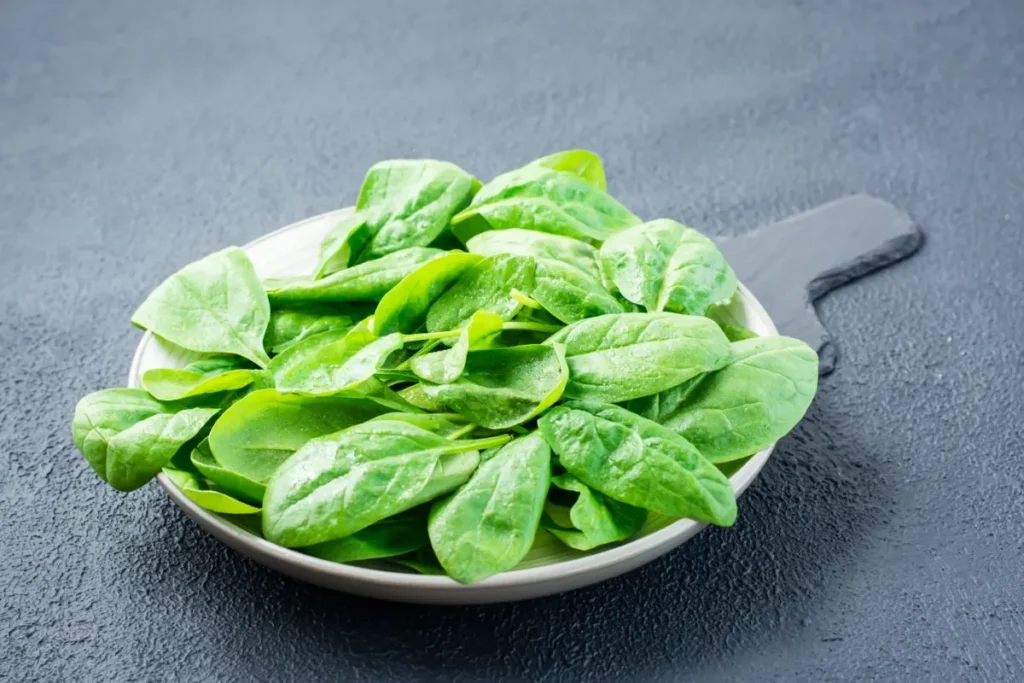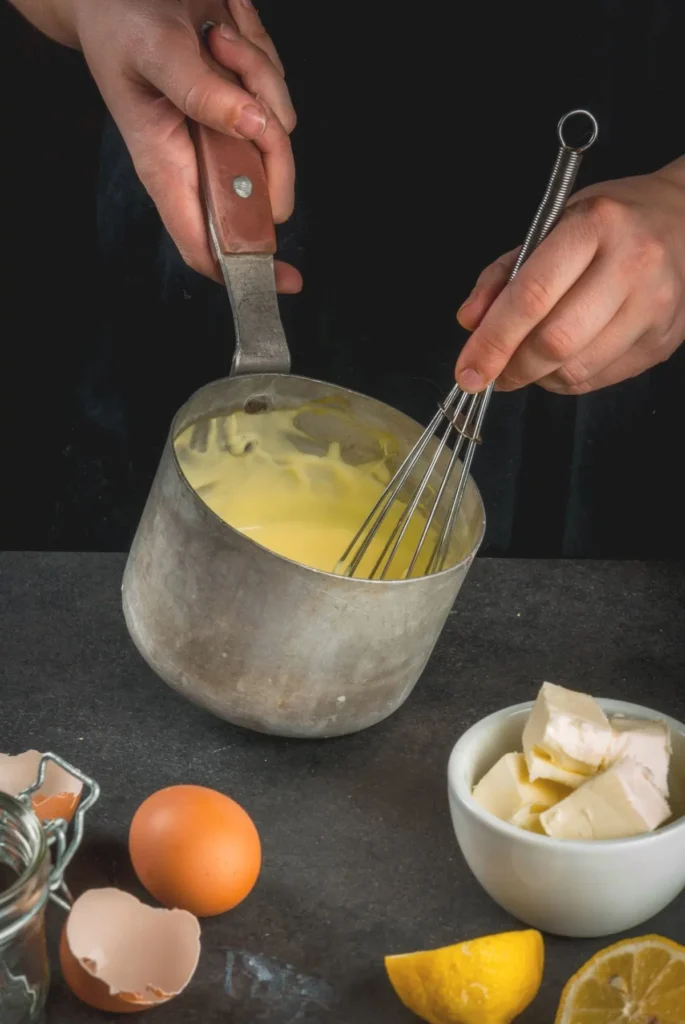Discover how to master Eggs Benedict Florentine with simple tips, fresh spinach, creamy hollandaise, and easy steps for a perfect brunch dish.
Introduction
Eggs Benedict Florentine is a popular brunch favorite that blends fresh spinach, delicate poached eggs, and velvety hollandaise sauce, all perched atop a toasted English muffin. This beautiful combination sets the stage for a satisfying meal that feels both comforting and refined. However, many people assume that mastering this classic dish is hard. In reality, with the right techniques, ingredients, and a bit of patience, you can easily recreate restaurant-quality Eggs Benedict Florentine at home.
In this comprehensive guide, you will learn the origins of the dish, discover the key components that make it special, and gain confidence with step-by-step instructions. Moreover, we will explore creative variations and helpful tips for success. Therefore, you will finish reading this article feeling inspired and empowered. In addition, we will discuss how to keep the dish nutritious and balanced. By following these insights, you will soon enjoy a perfect Eggs Benedict Florentine that will delight friends, family, and even guests at a relaxed weekend brunch.
- Introduction
- The Story Behind Eggs Benedict Florentine
- Key Components of Eggs Benedict Florentine
- Nutritional Insights of Eggs Benedict Florentine
- Eggs Benedict Florentine Recipe: Step-by-Step Guide
- Variations and Creative Twists on Eggs Benedict Florentine
- Serving and Presentation Tips
- Hosting a Brunch Featuring Eggs Benedict Florentine
- Cultural Significance of Eggs Benedict Florentine
- Frequently Asked Questions (FAQ)
- Conclusion
The Story Behind Eggs Benedict Florentine
Unraveling the History of Eggs Benedict
Eggs Benedict, a timeless brunch staple, originated in the United States during the late 19th century. Although its exact origin remains debated, many credit a New York restaurant for popularizing the dish. Traditionally, Eggs Benedict consists of a toasted English muffin topped with Canadian-style ham, a poached egg, and hollandaise sauce. Over time, this beloved recipe spread throughout the country, appearing on countless brunch menus.
Shifting Toward a Spinach-Based Variation

In contrast, Eggs Florentine emerged as a delightful twist on the standard Benedict recipe. Instead of using ham, it substitutes sautéed spinach. The name “Florentine” suggests a tie to Italian cuisine, where spinach is often a key ingredient. However, the adaptation found favor in American kitchens as people embraced more vegetable-focused meals. By incorporating spinach, Eggs Benedict Florentine delivers a lighter and greener version that appeals to health-conscious brunch lovers.
Key Components of Eggs Benedict Florentine
To master Eggs Benedict Florentine, it is essential to understand each element. Therefore, let’s break down the four main components: the English muffin, the poached egg, the sautéed spinach, and the hollandaise sauce.
Choosing the Perfect English Muffin
A fluffy, well-toasted English muffin forms the foundation of the dish. The ideal muffin boasts a crisp exterior and airy interior that readily absorbs flavors. Although store-bought English muffins work well, making them from scratch can add freshness and depth. For example, homemade muffins with whole-grain flours provide extra nutrients and texture.
Poaching the Ideal Egg
When it comes to poaching eggs, freshness matters. The whites should remain intact, wrapping gently around the bright yolk. To achieve this, bring a saucepan of water with a splash of vinegar to a gentle simmer. Carefully crack an egg into a small bowl, then slide it into the simmering water. After a few minutes, the whites will set while the yolk stays runny and rich. It may take a few tries, but practicing the swirling technique helps ensure a uniform shape.
Embracing Fresh Spinach
Spinach is key to Eggs Benedict Florentine. Fresh spinach leaves wilt quickly and provide a subtle sweetness. Therefore, it is best to sauté them gently in a small amount of oil until just wilted. Season lightly with salt and pepper to enhance their natural flavor.
Crafting a Creamy Hollandaise Sauce
Hollandaise sauce is the heart of any Eggs Benedict variation. This rich, buttery sauce balances tanginess from lemon juice with the creaminess of egg yolks. Therefore, emulsifying the yolks and clarified butter over gentle heat is crucial. Whisk constantly and add butter slowly to create a stable emulsion. If the sauce seems too thick, add a few drops of warm water. Remember, practice makes perfect.
Nutritional Insights of Eggs Benedict Florentine
Although Eggs Benedict Florentine is indulgent, it also contains valuable nutrients. Spinach offers iron and vitamins, while poached eggs deliver high-quality protein. With careful ingredient choices, you can keep this dish balanced.
Macronutrient Breakdown
Per 100g, approximate values:
| Nutrient | Amount per 100g |
|---|---|
| Calories | ~210 kcal |
| Protein | ~7 g |
| Carbohydrates | ~15 g |
| Fat | ~13 g |
| Fiber | ~1.5 g |
These values vary depending on your chosen ingredients and portion sizes.
Tips for Healthier Preparations
There are several ways to make Eggs Benedict Florentine more nutritious. For example, opt for whole-grain English muffins to add fiber, or use lighter hollandaise by reducing butter slightly. In addition, loading your plate with extra spinach or serving the dish alongside fresh fruit helps create a more balanced meal.
Eggs Benedict Florentine Recipe: Step-by-Step Guide
Below is a detailed recipe that outlines every step, helping you create a delicious Eggs Benedict Florentine at home. Therefore, read through the instructions first and gather all tools and ingredients before you begin.
Ingredients
- 2 English muffins, split
- 4 very fresh eggs
- 2 cups fresh spinach leaves
- 1 tablespoon cooking oil (e.g., avocado or olive oil)
- Salt and pepper to taste
For the Hollandaise Sauce:

- 3 large egg yolks
- 8 tablespoons unsalted butter, melted and warm
- 1 tablespoon fresh lemon juice
- Pinch of salt
- Small pinch of cayenne pepper (optional)
Equipment Needed
- Saucepan (for poaching eggs)
- Slotted spoon
- Heatproof bowl (for hollandaise)
- Whisk
- Spatula
- Toaster or oven for muffins
Step-by-Step Instructions
1: Prep Your Ingredients
Prepare all your ingredients in advance. Therefore, have fresh eggs at room temperature and wash and pat dry the spinach leaves. Melt the butter slowly until warm. Keep a pot of water ready for poaching the eggs.
2: Make the Hollandaise Sauce
- Fill a small saucepan with about an inch of water and bring it to a gentle simmer.
- In a heatproof bowl, whisk together the egg yolks and lemon juice. Place the bowl over the simmering water, ensuring the bowl does not touch the water.
- Whisk constantly as the yolks warm. Therefore, when the mixture thickens slightly, slowly drizzle in the melted butter while whisking.
- Continue whisking until you achieve a creamy, smooth sauce. Season with salt and a pinch of cayenne pepper if desired. If the sauce becomes too thick, add a few drops of warm water. Set aside, keeping it warm.
3: Sauté the Spinach
- Heat the oil in a skillet over medium heat.
- Add the fresh spinach and stir gently. The leaves will wilt within a minute or two.
- Season with a light sprinkle of salt and pepper, then remove from heat and keep warm.
4: Poach the Eggs
- In a saucepan, bring water to a gentle simmer and add a small splash of vinegar.
- Crack one egg into a small bowl. Carefully slide the egg into the simmering water.
- Poach for about 3-4 minutes until the whites are set but the yolks remain soft.
- Use a slotted spoon to lift the egg from the water, letting excess water drain. Set aside on a warm plate and repeat with the remaining eggs.
5: Toast the English Muffins
Lightly toast the English muffin halves until crisp on the outside but still tender inside. The texture should complement the creamy hollandaise and soft poached eggs.
6: Assemble the Eggs Benedict Florentine
- Place two toasted English muffin halves on a plate.
- Top each half with a small mound of wilted spinach.
- Gently place a poached egg on top of the spinach.
- Spoon a generous ladle of hollandaise sauce over the egg.
- Season lightly with salt and pepper.
Serve immediately. The combination of spinach, poached eggs, and creamy hollandaise will impress your palate and guests.
Variations and Creative Twists on Eggs Benedict Florentine
Exploring Alternate Greens
Although spinach is the hallmark of Eggs Florentine, you can experiment with other greens. For example, try sautéed kale or wilted Swiss chard. In addition, consider adding finely chopped herbs like tarragon or chives for extra flavor.
Adding Extra Veggie Layers
You may add thinly sliced tomatoes or even mushrooms underneath the spinach. For instance, a layer of roasted asparagus tips can introduce a satisfying crunch. These vegetable-based twists help you craft unique versions of this classic meal.
Pairing with Simple Sides
Often, Eggs Benedict Florentine stands on its own as a hearty brunch centerpiece. However, you could serve it with a side of roasted veggies. You might also consider a light salad to round out the meal. For more ideas, our Egg White Frittata Recipe provides another high-protein breakfast option with a lighter profile.
If you are in the mood for a more comforting brunch, consider serving with something warm and soothing. For example, learning How to Add Flavor to Bland Turkey Soup can help you create a flavorful side dish that pairs nicely with Eggs Benedict Florentine.
Serving and Presentation Tips
Making Your Dish Look Appealing
Presentation matters, especially for brunch dishes. Therefore, arrange the Eggs Benedict Florentine neatly and drizzle the hollandaise sauce elegantly. Adding a sprinkle of fresh herbs or microgreens on top creates a colorful contrast. You could also serve on a brightly colored plate to highlight the dish’s delicate tones.
Keeping Components Warm
Sometimes, timing is tricky. To keep everything warm, prepare the sauce last, or keep it warm over barely simmering water. In addition, toast the muffins just before assembly. Ensuring each element is warm enhances the final taste and texture.
Hosting a Brunch Featuring Eggs Benedict Florentine
When you plan a weekend brunch, Eggs Benedict Florentine often takes center stage. Therefore, consider a menu that includes other simple, yet interesting items. For example, you can serve Protein Pumpkin Muffins for a sweet treat. Additionally, consider making a light vegetable dish for guests who prefer a different option, such as the Ditalini Pasta Recipe which adds an Italian-inspired side.
In addition, preparing certain components in advance, such as clarifying butter or washing spinach, reduces stress on the day. Poaching eggs to the perfect consistency might take practice, but after a few tries, you will feel more confident.
Cultural Significance of Eggs Benedict Florentine
Eggs Benedict Florentine reflects evolving culinary tastes. Traditional Eggs Benedict relies on hearty, meat-based toppings. However, the Florentine version replaces meat with spinach, embracing a more plant-forward approach. This shift aligns with current trends, as people embrace lighter, more vegetable-centric meals.
In many American brunch spots, Eggs Benedict Florentine is a highlight, symbolizing comfort, sophistication, and adaptability. Its presence on menus shows how classic dishes can evolve while maintaining their fundamental appeal.
Frequently Asked Questions (FAQ)
What is the difference between Eggs Florentine and Eggs Benedict?
Eggs Benedict typically includes a slice of ham or Canadian-style ham beneath the poached egg, while Eggs Florentine replaces the ham with sautéed spinach. Both use English muffins and hollandaise sauce, but the Florentine version is greener and more vegetable-forward.
What are the three types of Eggs Benedict?
Common variations include the classic Eggs Benedict with ham, Eggs Florentine with spinach, and Eggs Royale with smoked salmon. In addition, there are countless other creative spins that may substitute greens, mushrooms, or different sauces.
What does Florentine consist of?
“Florentine” usually refers to dishes featuring spinach. Eggs Florentine includes an English muffin, sautéed spinach, a poached egg, and hollandaise sauce. The spinach is a defining element that sets it apart from other versions of Benedicts.
How to eat Eggs Florentine?
Use a fork and knife to cut through the layers. This releases the runny egg yolk, allowing it to blend with the hollandaise. Therefore, each bite delivers a perfect mix of textures and flavors. Savor slowly and enjoy the delicate balance of richness and greenery.
Conclusion
Eggs Benedict Florentine is more than just a brunch dish. It represents a harmonious balance of tastes, textures, and colors. Although it may seem complex, with practice and attention to detail, you can master every element. Therefore, do not be afraid to experiment with different greens, seasoning, or sides. In addition, consider the nutritional aspects and think about how to make it more balanced. With the insights shared in this guide, you are ready to create a memorable Eggs Benedict Florentine that will become a cherished weekend staple.

